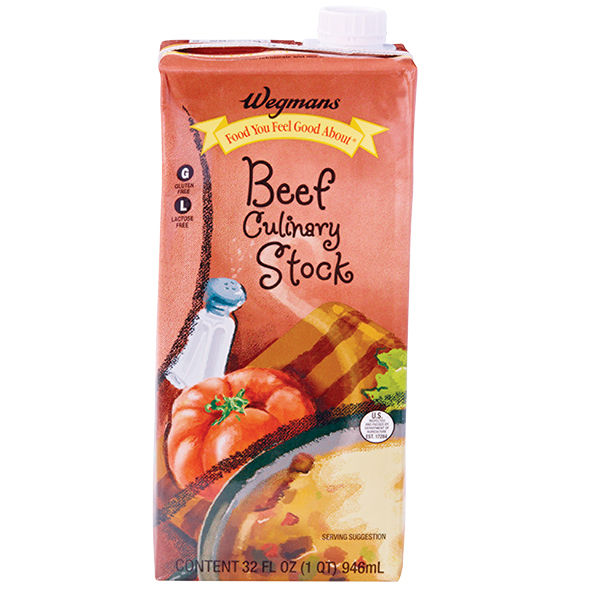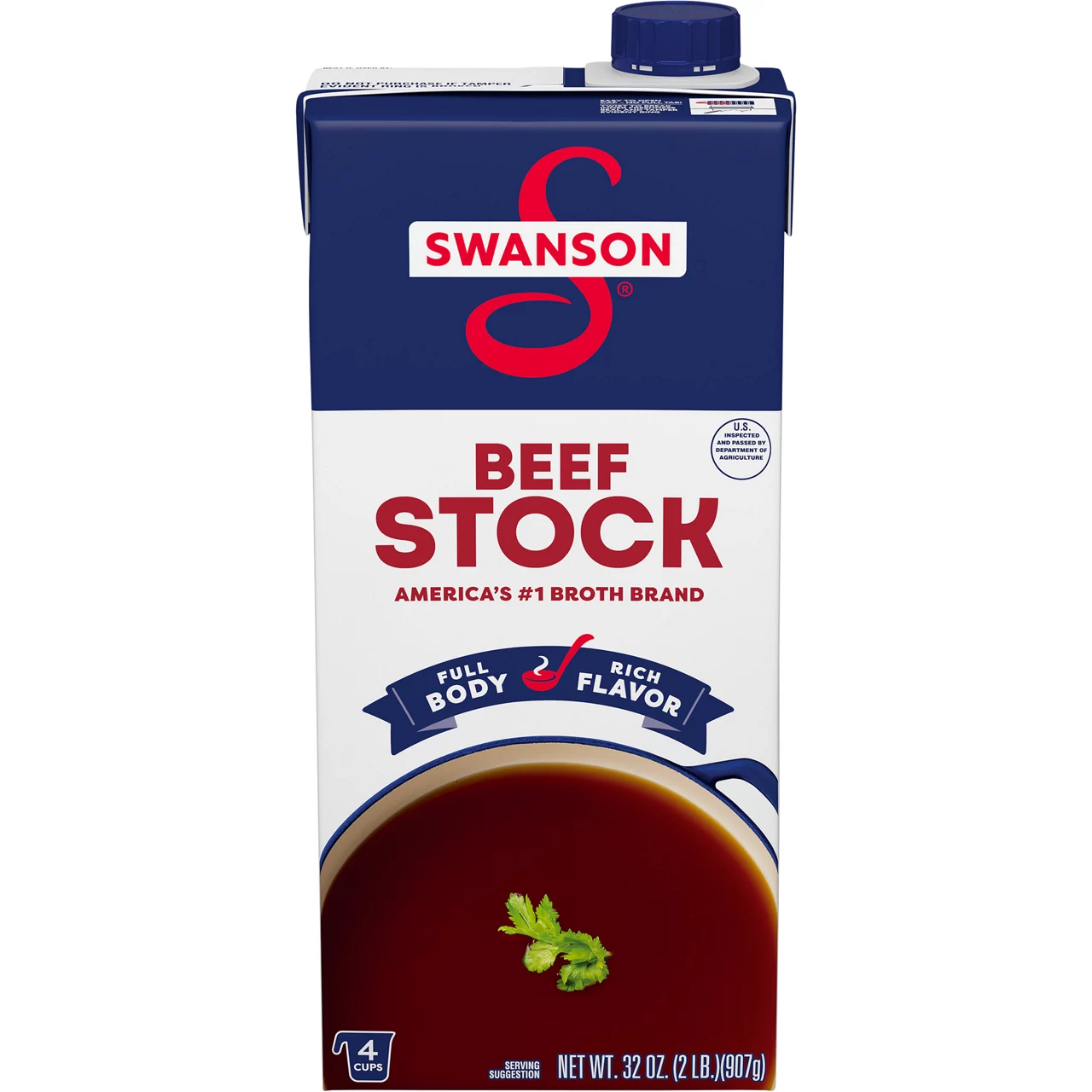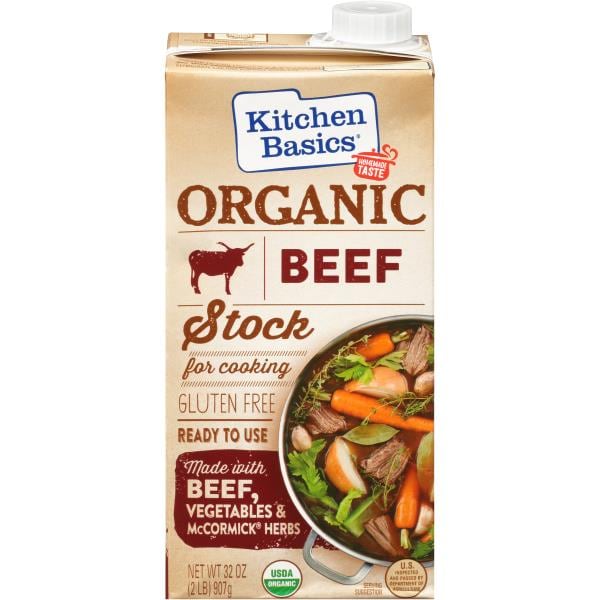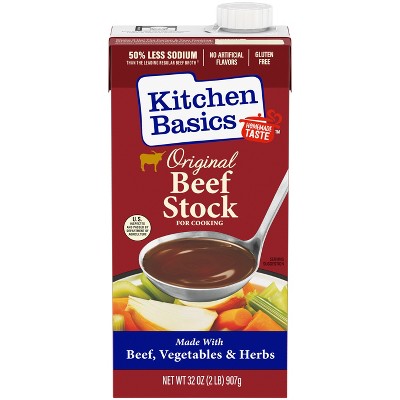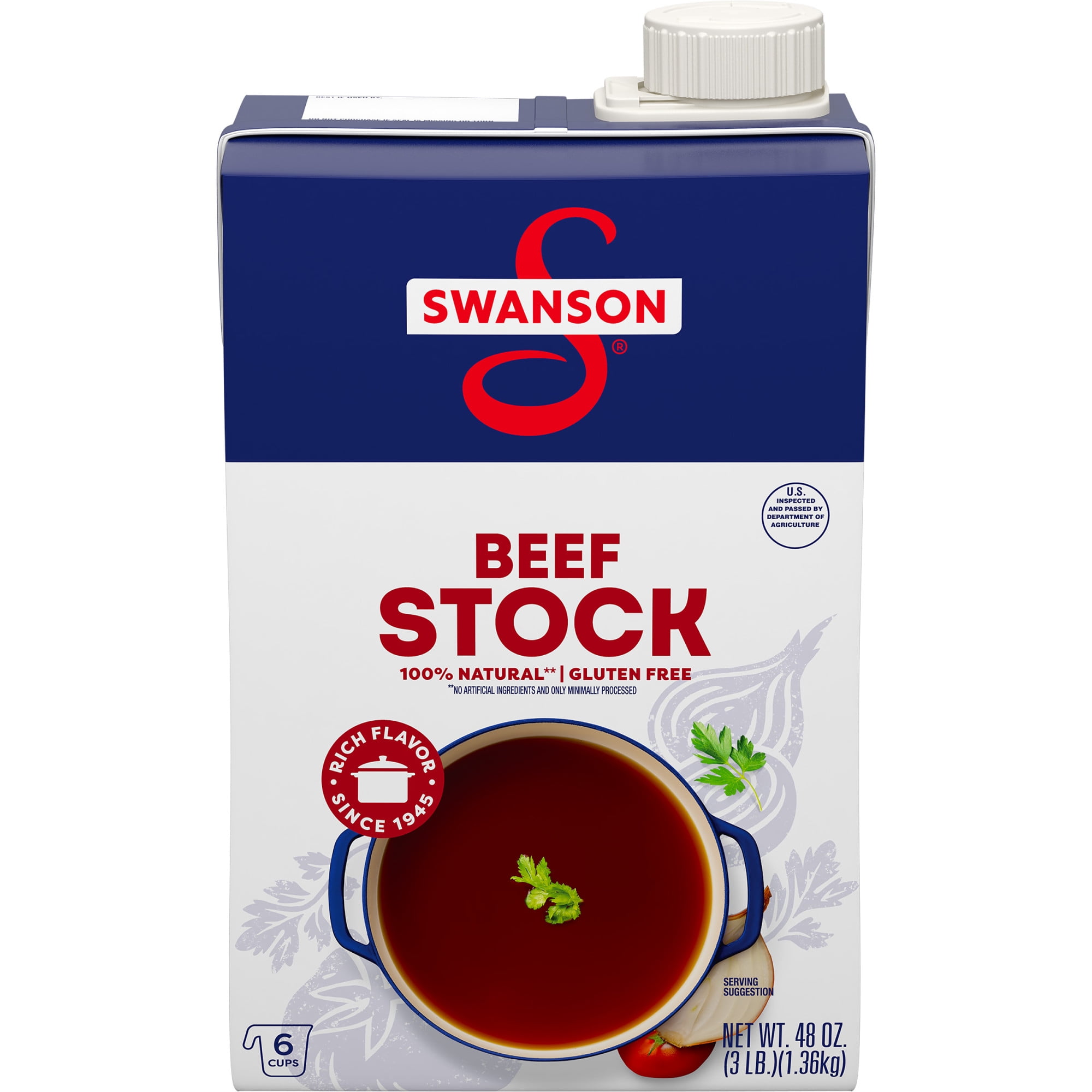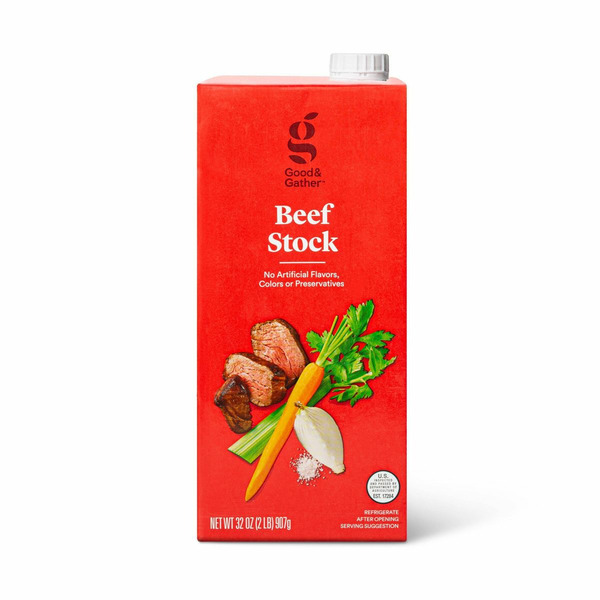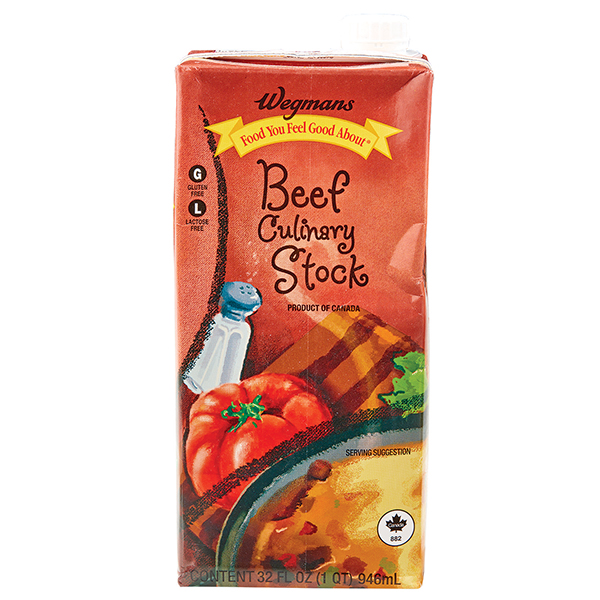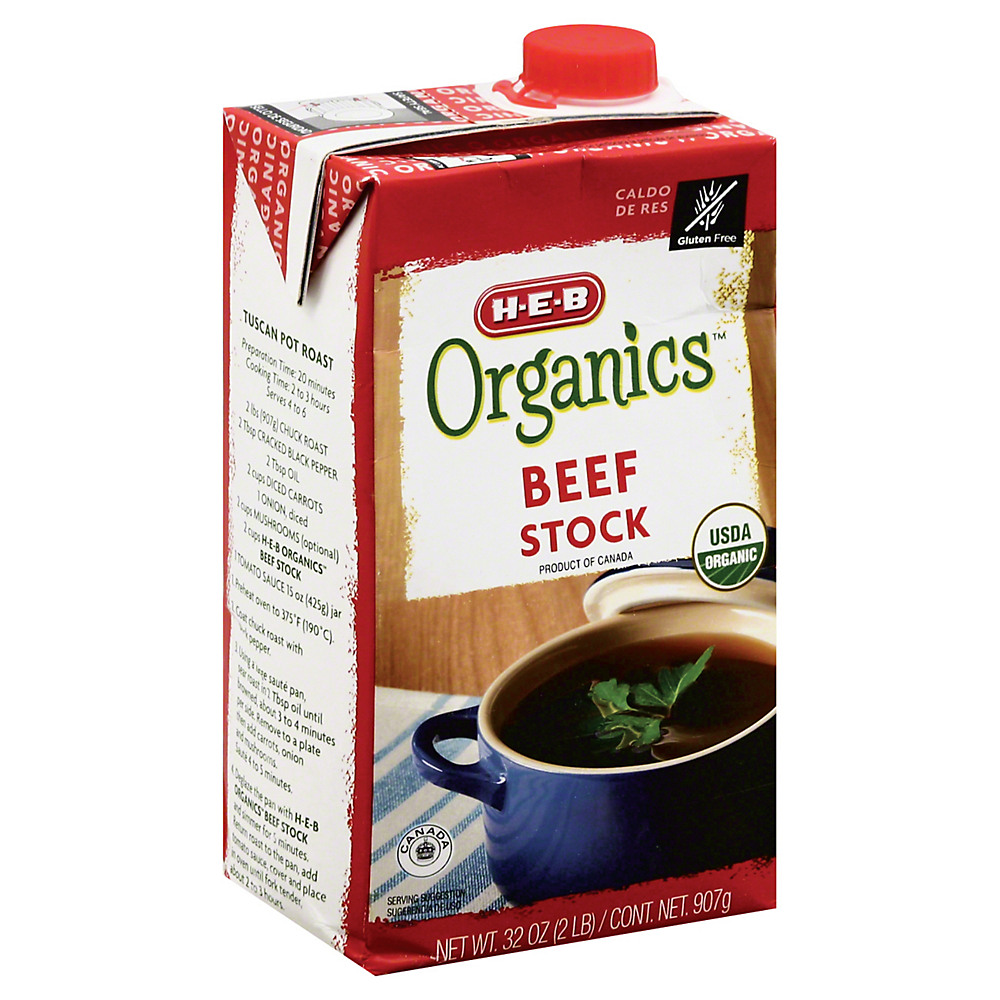SOUPS
MAIN DISHES
CONDIMENTS AND SAUCES
Beef Stock
Beef stock is a flavorful liquid made by simmering beef bones, vegetables, and herbs in water. The slow cooking process releases the collagen, minerals, and nutrients from the ingredients, creating a deeply flavorful and nutrient-rich base for a variety of dishes. Beef stock is a pantry staple in many kitchens and can be found in both store-bought and homemade varieties.
An essential component in many dishes, both classic and contemporary, beef stock adds depth of flavor and richness to soups, stews, sauces, and even braises. Crafting a delicious homemade beef stock is an opportunity for home cooks to customize the flavors according to their personal preferences and utilize leftover beef bones and vegetables to reduce waste.
37%
CARBS
3%
FAT
60%
PROTEIN
221 Beef Stock Products
Wegmans Beef Culinary Stock
Swanson 100% Natural Beef Stock
Chef's Cupboard Cooking Stock Fat Free Beef
Kitchen Basics Organic Beef Stock
Kitchen Basics Original Beef Stock
Swanson 100% Natural, Gluten-Free Beef Stock
Good & Gather Beef Stock
Kroger Beef Stock
Wegmans Culinary Beef Stock
H-E-B Organics Beef Stock
Used In 99 Recipes
Beef Stock Is Frequently Used With
Beef Stock FAQ
Cooking with beef stock can be a bit of a challenge for novices but with a few tips and tricks, it can become a lot easier. The rich essence of beef stock comes from simmering beef bones over an extended period of time. This process extracts the flavorful marrow and collagen, leaving you with a base that can add immense depth and richness to different recipes. Adding roasted vegetables and herbs to the stock can significantly enhance its flavor. However, it's important to avoid over boiling as it can cause emulsification of fats, resulting in a cloudy stock. Lastly, skimming off the fat once the stock is cooled is crucial for a clear, clean flavor.
The most common mistakes when cooking with beef stock include using poor quality bones, over boiling the stock, not deglazing the pan after roasting the bones, not skimming off the fat after cooling, and rushing the simmering process.
To get the most out of beef stock, always use good quality bones, preferably ones with some meat attached to them. Roast the bones before boiling, then deglaze the roasting pan and add the liquid to the stock. Finally, strain the stock before use to ensure a smooth consistency.
Many people might not know that they can use leftover beef bones and vegetable trimmings to make an economical homemade beef stock. Old wine can work wonders by contributing to the complexity of the flavor.
What gives beef stock its rich flavor?
What is the difference between beef stock and beef broth?
Can I make beef stock out of leftover beef bones?
Why is my beef stock bitter?
How can I improve the flavor of my beef stock?
Why is my beef stock cloudy?
How can I make beef stock in a pressure cooker or Instant Pot?
Can I substitute beef stock with chicken or vegetable stock in a recipe?
Can I use beef stock to make a gravy?
What can I do with leftover beef stock?
Expiration & Storage Tips
When does beef stock expire?
Unopened store-bought beef stock usually lasts for about one year past the printed date on the package. Once opened, it stays good in the refrigerator for 4 to 5 days. Homemade beef stock, on the other hand, can be kept for 3 to 4 days in the refrigerator, but can be frozen for up to 3 months for longer storage.
How do you tell if beef stock is bad?
Bad beef stock emits a sour, unpleasant odor that's distinctly different from its rich, savory smell when fresh. The appearance might also change, with cloudy particles or mold forming instead of the clear or slightly gelatinous appearance of good beef stock. If you notice any of these changes, it's best to err on the side of caution and discard the beef stock.
Tips for storing beef stock to extend shelf life
• Store opened beef stock in airtight containers in the refrigerator. This not only maintains its freshness, but also prevents it from absorbing flavors of other items stored in the refrigerator.
• Freezing beef stock in ice cube trays before transferring the frozen cubes to freezer bags is a fantastic way to store it long term. This trick makes it easy to defrost only what you need, minimizing waste.
• Like many foods, beef stock benefits from the coolest part of the refrigerator. This is usually toward the back rather than in the door, where the temperature fluctuates more.
• For homemade beef stock, it's best to cool it quickly after cooking to minimize the bacteria growth. You can do this by placing the pot in an ice bath before storing it in the refrigerator or freezer.
EXPIRES WITHIN
19 - 29
MONTHS
Equivalents
Substitutes
Health Info
Macros
2g
CARBS
0g
FAT
4g
PROTEIN
Allowed on these diets
LOW FAT
HIGH CALCIUM
KETO
PALEO
WHOLE 30
MEDITERRANEAN
LOW CARB
LACTOSE FREE
GLUTEN FREE

